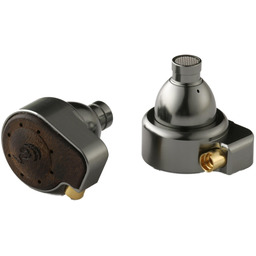220Ah Deep Cycle Battery, Great for SPL Vehicles!!
Product Information Product Code FCD12-220DC Catalog Deep Cycle Series Product Packing Information Single Unit Dimension 522(L)x240(W)x225(H) Net Weight per Carton(kg) 64.2 Other Details Nominal Voltage (V) 12 Terminals E (M8) Capacity (Ah) / Nominal Rating 220 Applications Recreation, Renewable Energy System Deep Cycle batteries by definition are designed to produce current over an hourly rate. This rate is referred to as Capacity (C). When a battery capacity is expressed as C20 that's the total capacity discharged over 20 hours. In the case of a 200AH battery @ C20 that would be 200AH divided by 20 hours to give you a discharge figure of 10 Amps per hour for the 20 hours. These figures should be cross referenced against other brands as some quote 10 hour rates and others 100 hour. The tell tail test is the weight of the battery if it's lighter but claims higher performance figures it's either not a deep cycle battery or they aren't telling the truth or possibly the battery will only last 3 years and not 5 or more like you'd hope. From the example above when the capacity is discharged quicker than 10 Amps then the total AH available reduces because the cost to the battery for expelling energy quicker is that it takes more energy to give more energy quicker. In other words, if a marathon runner could run 20Km's at a steady pace but you ask him to sprint in the middle he isn't going to make it to the finish line but he might make 19Km before exhaustion. How long will your batteries last? A question with two meanings! The AH (capacity) or length between recharges is dependent on what devices & how much power you discharge and over what period of time. (see amp hour ratings) The ambient temperature plays a part because the colder it is the less capacity you have. And lastly the state of charge and your end voltage cutout. if your battery was fully charged and you discharge to 50% then you'll have half the rated capacity. To help the battery last longer we'd hope you'd aim for an end voltage of say 12.2 or 50% SOC before you recharge. That last sentence is the second part to this question with two means; The further or deeper you discharge a battery the fewer times it can be recharged before it is considered to of performed it's life cycles. So the deeper you go the sooner you will need to replace. As a guide 0.25 volts is 25% of the battery capacity. A batteries capacity reduces during it's life just like a marathon runner can't run as far at the same speed they used to. A batteries usable life is considered used when it's capacity is 80% of what it was new. This comes about because of the number of cycles used; where the chemical reaction that generates energy is exhausted or when the battery isn't cycled heavily but is nearing it's design life. At that point the acid's aren't as strong and the lead is going hard making the chemical processes difficult to produce power. If your battery was over-sized when new and you don't consume much power you might not see these effects for many many years.

 Contact
Contact Log In
Log In Cart
Cart 










